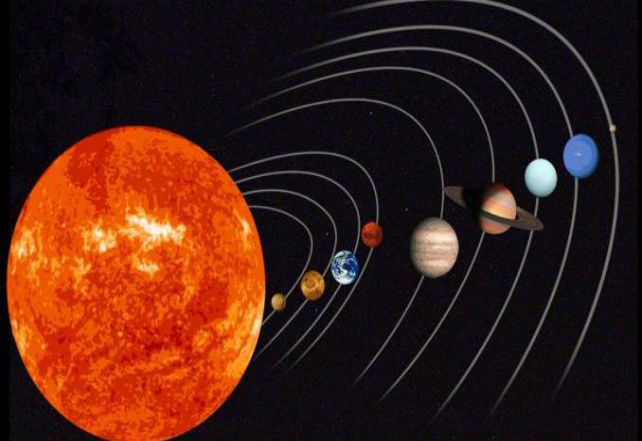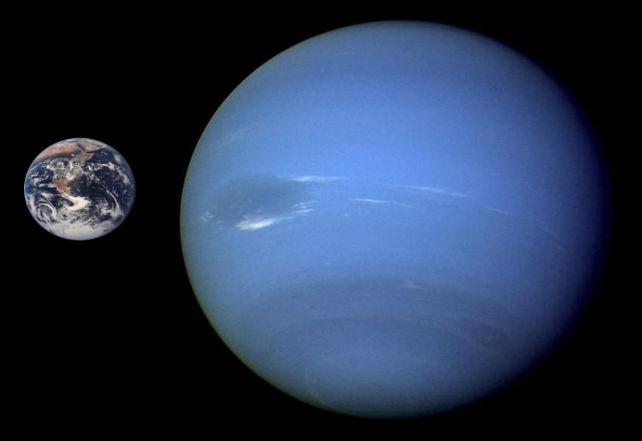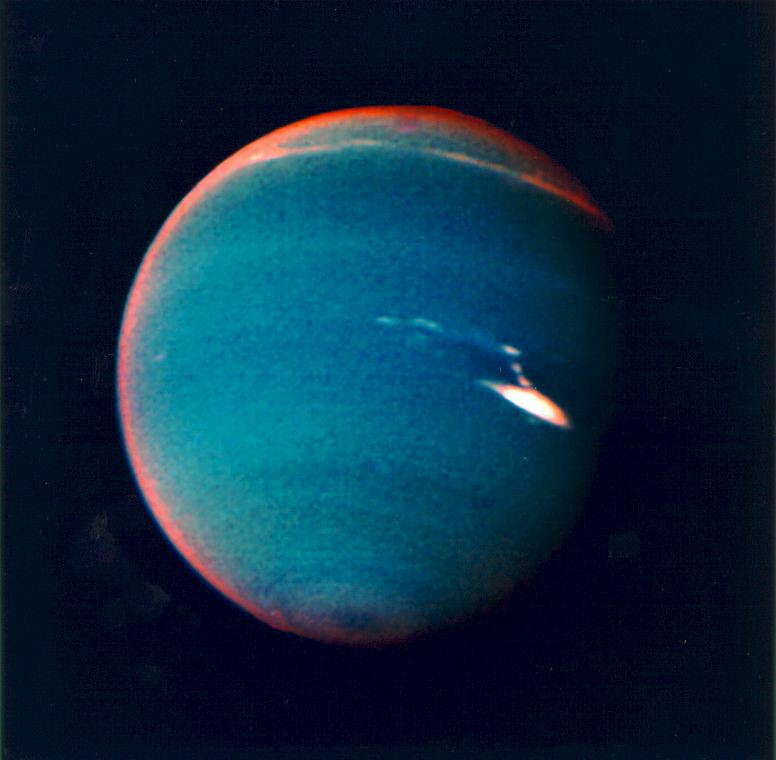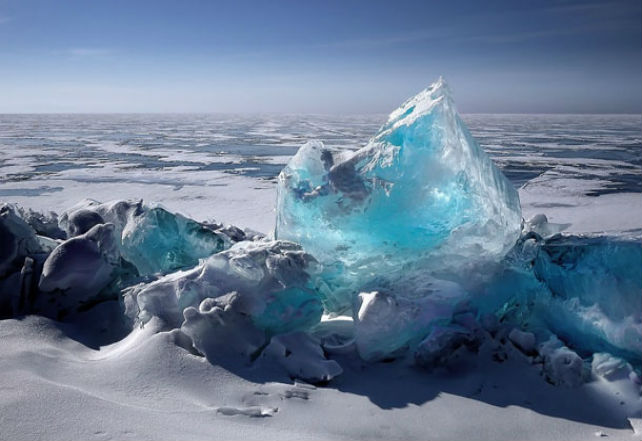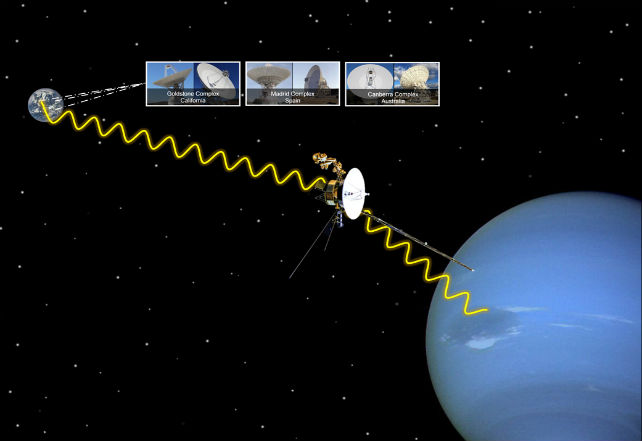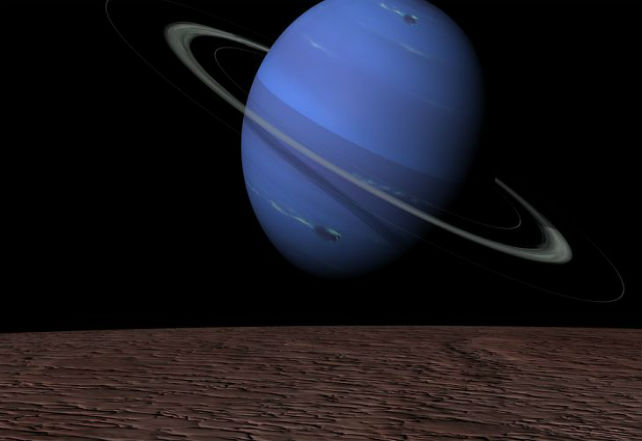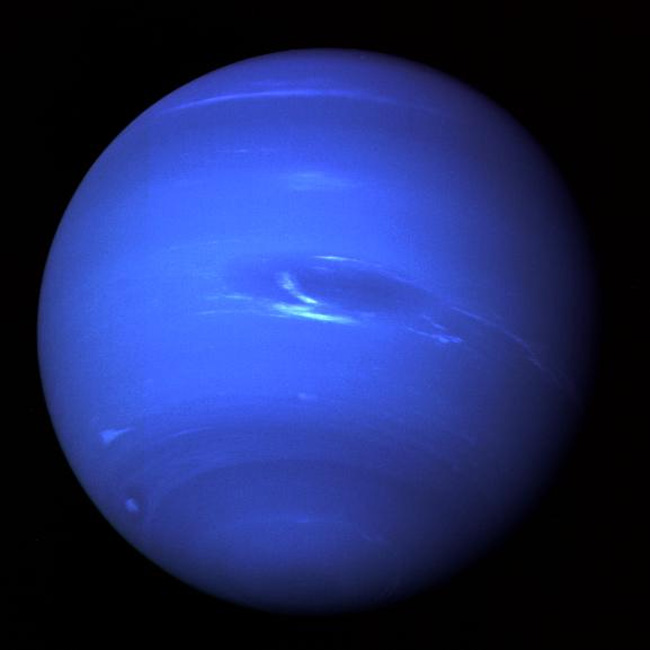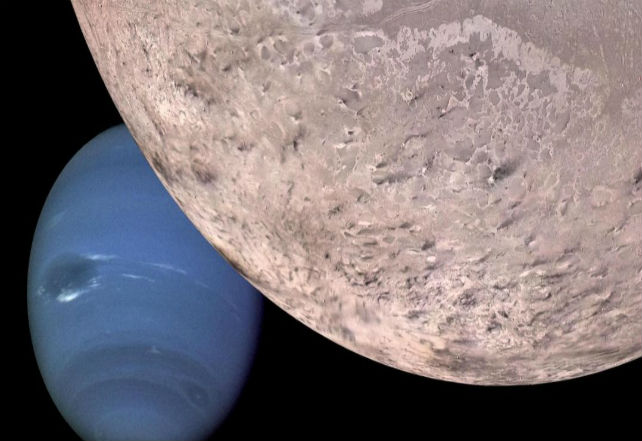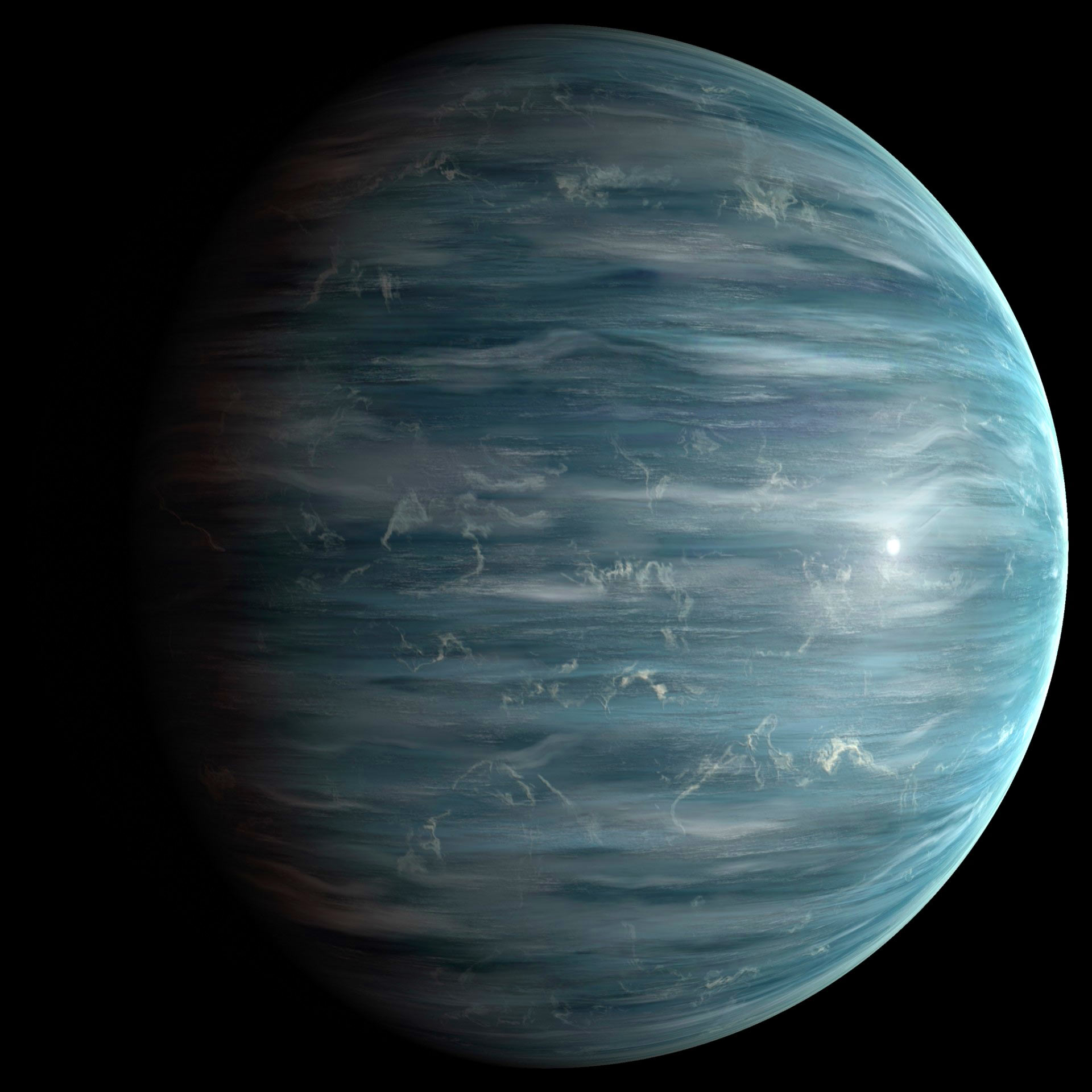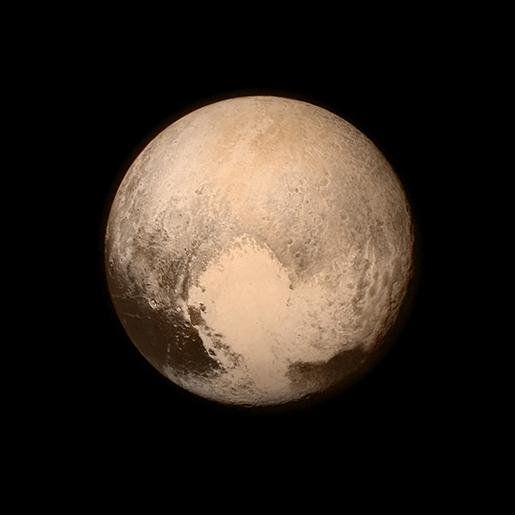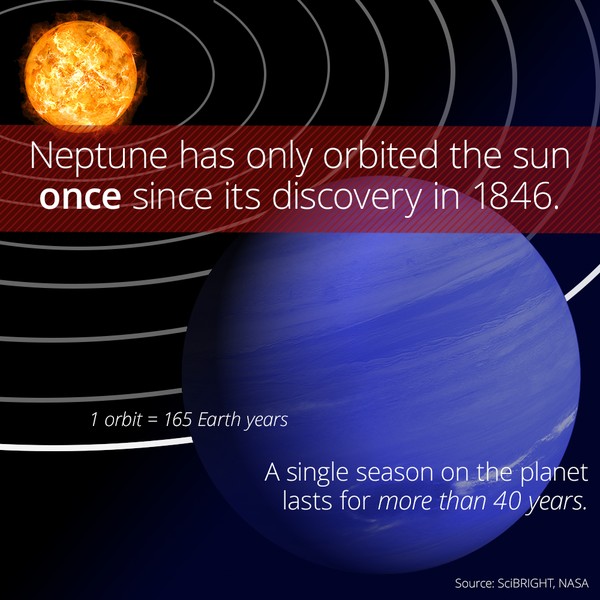This, despite its core producing almost as much heat as the sun. Speaking of the sun, this planet also happens to be the farthest from our solar system’s main source of heat. Can you guess which fascinating, gorgeous, yet mysterious planet we’re talking about? Yep, we’re talking about Neptune. If you wish to learn more information about this blue celestial “jewel,” read the following list 25 Things You Need To Know About Neptune. Later, the Romans translated the sea god’s name into Latin and the rest is history. Now you also know why this planet’s symbol is the trident. See, the beautiful blue planet is “only” 2.7 billion miles away from Earth. Further, Neptune was the first planet discovered by mathematical rather than observational means. The French astronomer Urbain Le Verrier predicted the existence and position of the planet in the 1840s with the help of mathematics. The discovery of Neptune was seen as a triumphant validation of celestial mechanics, and is considered one of the most significant moments of 19th-century science. Oh, and Neptune was originally named Le Vierrier. This makes Neptune very light for its size. The surface gravity on Neptune is about 110% of the surface gravity on Earth. So, if someone weighs 200 pounds on our planet, this 10% difference in gravity would translate to an additional 20 pounds on Neptune. What we see is actually the tops of some very deep gas clouds, which give way to water and other melted ices that lie over an approximately Earth-sized core, which is made up of silicate rock and a nickel-iron mix. So, if you were to attempt to stand on Neptune, you would end up sinking through the gaseous layers. That makes Neptune the coldest planet, with an average temperature of -353 degrees Fahrenheit (-214 C). Neptune has also been known to have gigantic, spinning storms that could swallow the whole Earth. Good thing we orbit a safe distance away! It’s also 17 times heavier than Earth, which means that even Chuck Norris would have a hard time lifting Neptune on his shoulders. Passing about 3,000 miles above Neptune’s north pole, it was the closest approach Voyager 2 made to any planet. This took place 12 years after the spacecraft took off from Earth. It’s also estimated that this Great Dark Spot is roughly the same size as Earth. Why they call such a humongous thing just a “spot,” we have no idea! Interestingly, this magnetic field sits at an angle on the planet, changing chaotically as it interacts with the solar wind. The rings are named Galle, Le Verrier, Lassell, Arago, and Adams. These names are in honor of the astronomers who made important discoveries regarding the planet. How? Well, methane absorbs reddish light and reflects bluer colors. Moving from closest to Neptune to furthest out, their names are Naiad, Thalassa, Despina, Galatea, Larissa, S/2004 N1 (which has yet to receive an official name), Proteus, Triton, Nereid, Halimede, Sao, Laomedeia, Psamathe, and Neso. Scientists suggest that a day will come when Triton will be torn apart by Neptune’s gravitational forces. This likely will not happen any time soon. Even though Neptune is the smallest of the four, it’s the densest. Keep in mind that there’s not much ice on Neptune. In astrophysics and planetary science, the term “ice” refers to volatile chemical compounds such as water, ammonia, or methane. In other words, an average human would need two full lifetimes to experience a single year on Neptune. In contrast to Earth’s 24-hour day, Neptune has a 16-hour day, which is a result of the swift rotation it has upon its axis. As we mentioned already, one year on Neptune is 165 years on planet Earth. So, a belated happy birthday to Neptune. The huge temperature differences between Neptune’s center and its surface is what creates the monstrous wind storms on the planet. The last time Pluto crossed inside Neptune’s orbit was on February 7, 1979; at that time, it temporarily became the eighth planet from the sun. However, it just sounds funny to say that the summer lasts 41 years on a planet when the average temperature is -353 degrees Fahrenheit.


